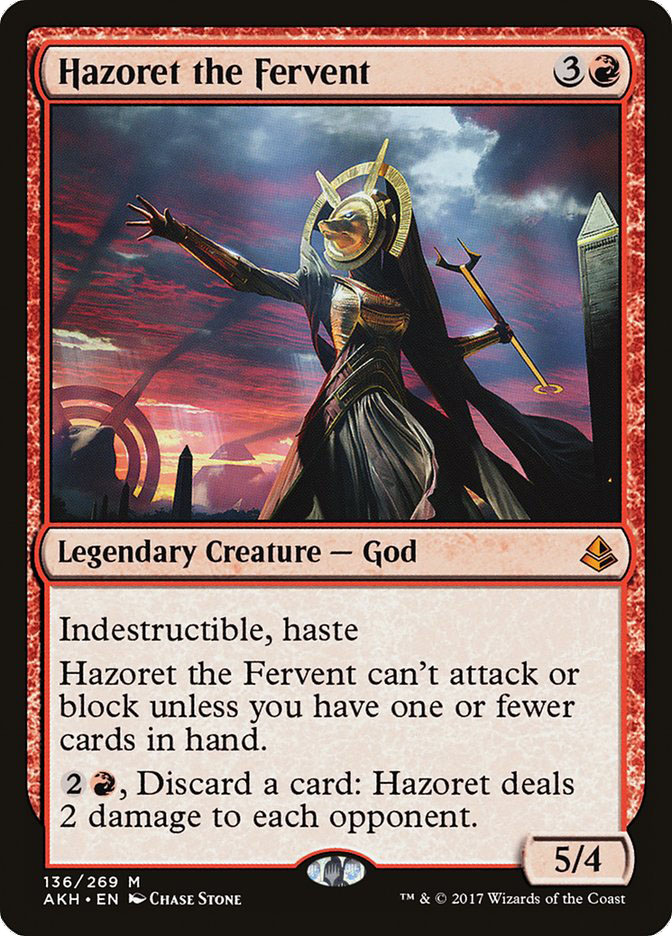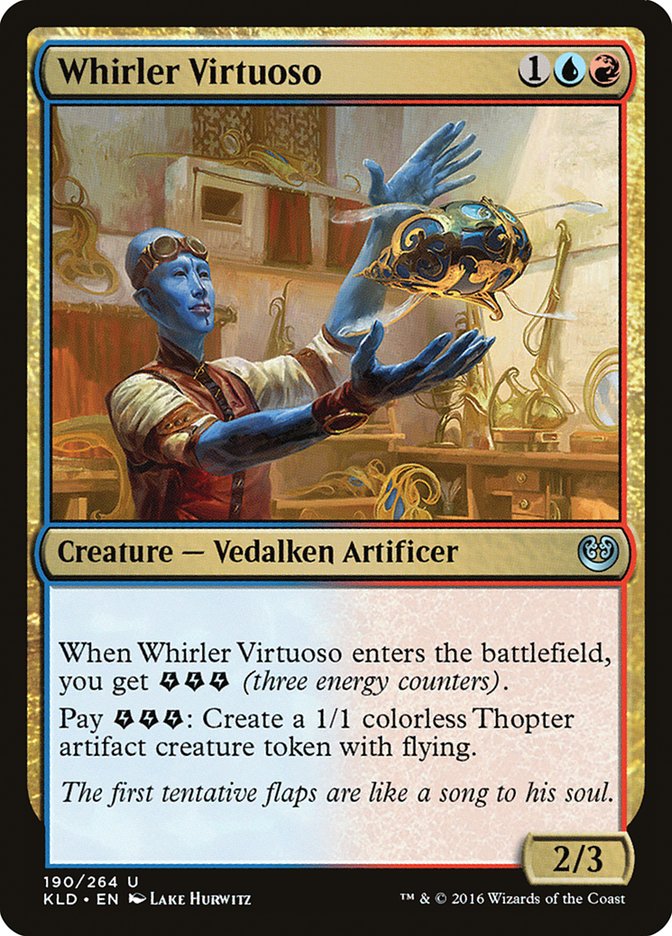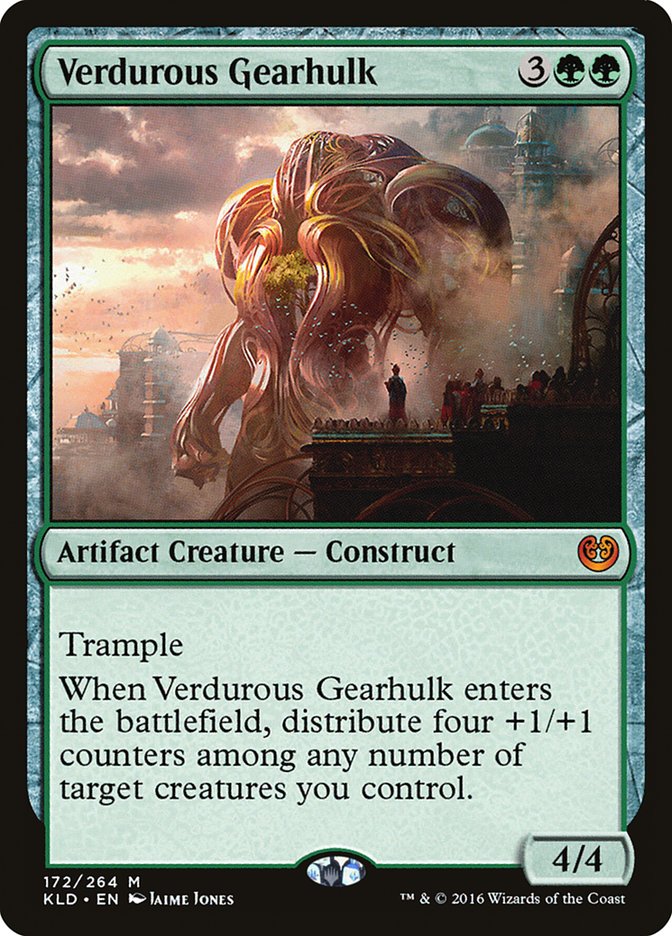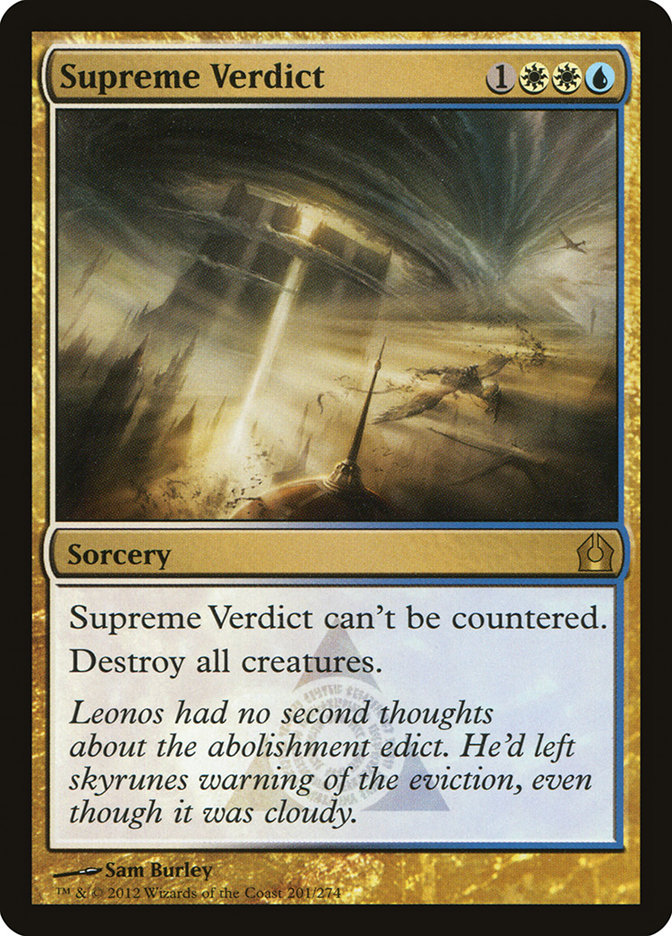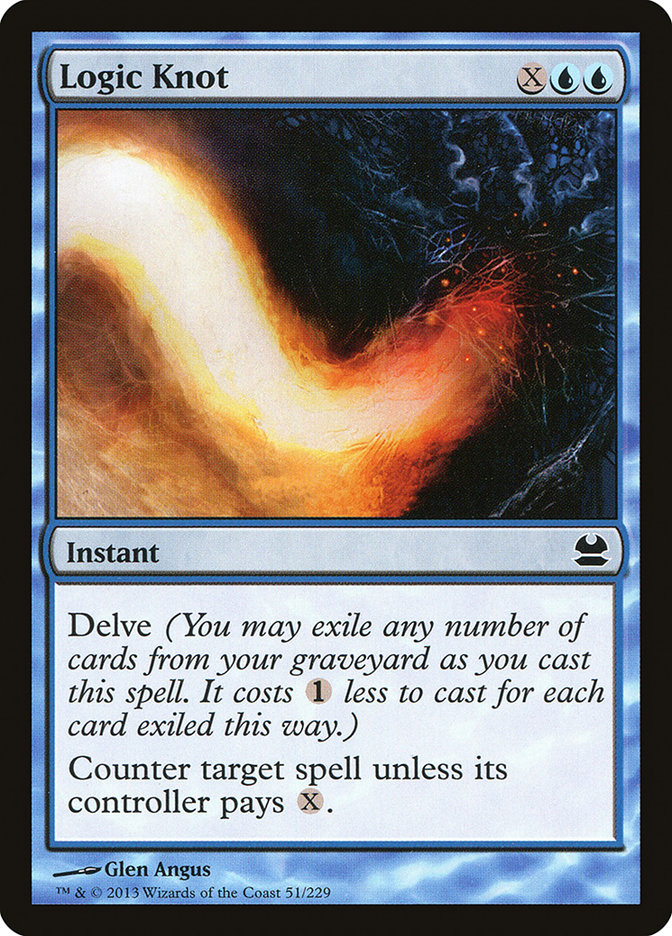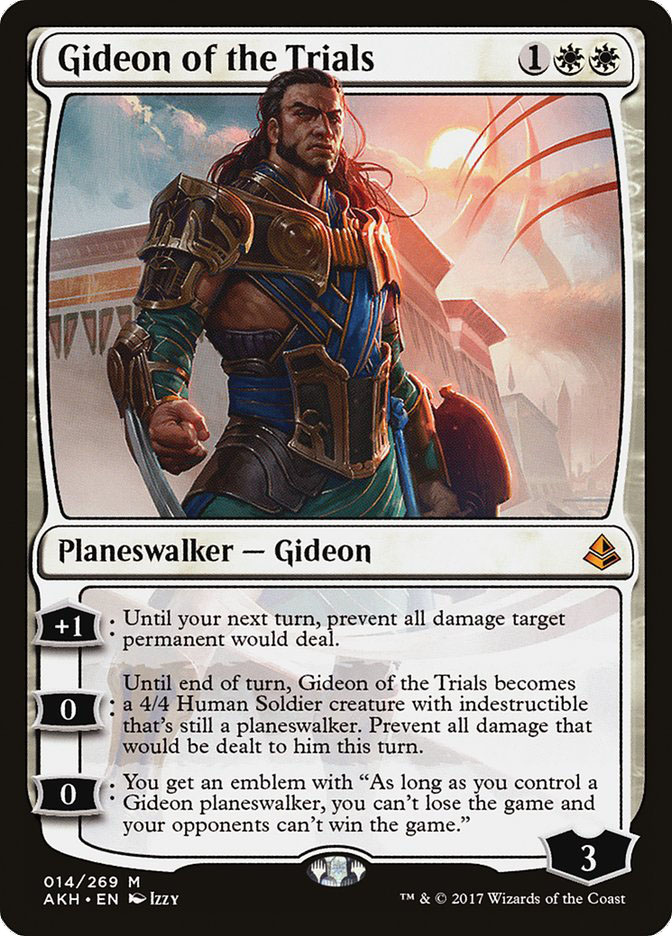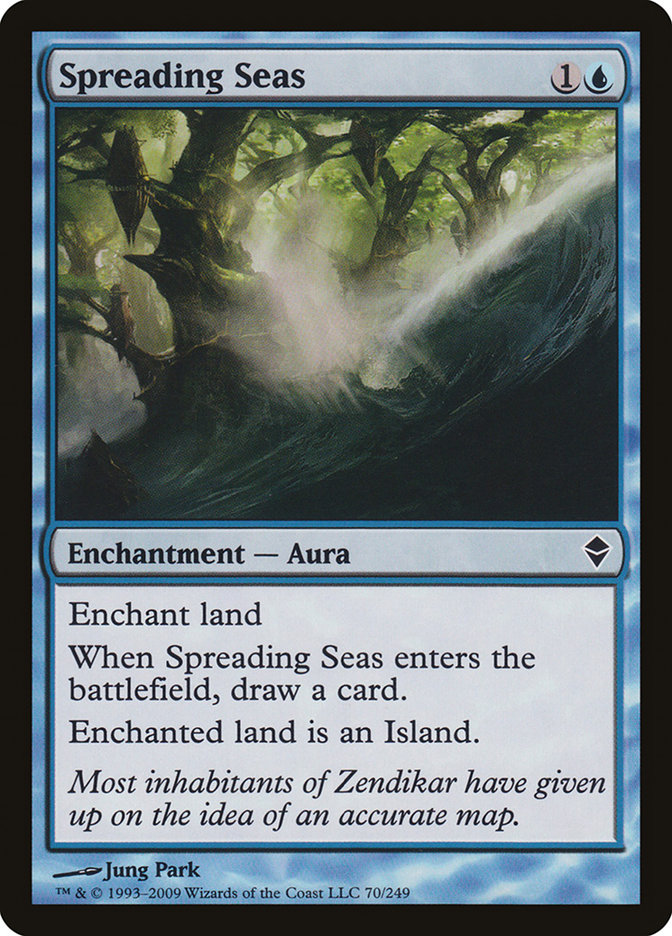
Hyperbole is everywhere in Magic. You find it permeating the banter between rounds at your local FNM. You can’t escape it the tables of an Open on the SCG Tour. You’ll hear it in conversations between top pros. It’s even in the first sentence of this article.
The latest cards are all either unplayable or completely broken. A matchup can be basically a coin toss, but if it’s not, it’s probably unwinnable. The dialogue around any aspect of Magic theory has its own share of unrealistically exaggerated statements. It’s in our card evaluations, our game play, our conversations, and even our thoughts.
Now, before I scare anyone off, let me make it clear that this is not a call to arms against hyperbole. I love hyperbole. I spent most of last week ranting to anyone who would listen about how Ramunap Red could never beat Temur Energy and staring incredulously at my computer screen every time I somehow won the matchup anyway. Hyperbole lets us make points in clear ways without being bogged down by all the details. It cuts through the absurd difficulty of Magic and lets us advance theory in a timely fashion. It’s humorous. And everyone knows that under the all the hyperbole lies a layer of unexplored nuance, so what’s the harm?
Zone-Based Position Analysis
Let’s go back to last week. I was telling people that Ramunap Red couldn’t beat Temur Energy, and truly believed it to be a very bad matchup. Do you think that belief influenced my play?
Of course it influenced my play. How could it not? Because I thought that Temur Energy was a very bad matchup for me, I felt behind the second they cast Attune with Aether and found a Mountain. Realistically, that’s way too early to know whether you are going to be playing from behind or not in a game, but reality didn’t matter. I thought the matchup was very bad, so I constantly played like I was very behind, and that’s a problem.
One of the places where nuance is the most important in a game of Magic is accurately assessing your position in the game. How likely you are to win the game is very important, as it is the single biggest factor in helping you determine what risks to take as the game progresses. It’s the spot where our frequent use of hyperbole hurts us the most, as it makes us err towards the extremes far more often then we should. In-game, you aren’t always way ahead, way behind, or dead even, and your gameplay should reflect this.
That being said, we don’t need to dive headfirst into extreme levels of nuance. Maybe some Magic players out there are at the point of making different decisions when they are 45% to win than when they are 46% to win, but most of us sure aren’t there. And we don’t need to be. Nuance past winning/losing/even can be very helpful and beneficial to consider even if we aren’t diving down into exact to-win percentages.
Instead of percentages, let’s think about the different stages of winning and losing in terms of the game zones that should be the focus of our probabilistic thinking. Magic is a game of many unknowns, and much of the skill in Magic is correctly playing to what those unknowns could be. The top of your deck, the top of your opponent’s deck, and your opponent’s hand are the three big sources of uncertainty in a game of Magic, and how we play around them is greatly influenced by how likely we think we are to win.
“I Need a Miracle!”
Primary Zone: Your deck
Secondary Zone: Your hand
We’ll start at the worse end of the winning/losing spectrum and work our way across. Sometimes in a game of Magic, you can’t beat the cards you know about. They have an impressive force and you have a pathetic squad. It happens. You can’t win them all.
It’s easy to recognize an “I need a miracle!” position; just look for an opposing battlefield state that will end the game within two turns despite anything you can do with the cards in your hand. These are the most desperate spots in a game of Magic, but they occur a lot less often than our hyperbolic thought processes would have us believe.
The temporal element of the “I need a miracle position!” is very important. The exact same battlefield state from your opponent looks very different when you’re at ten life compared to when you’re at twenty. It’s so easy to underestimate just how much a few cards drawn on both sides can change a game, and you should never play as if you are this far behind if you have more than two turns in front of you as things stand.
The good news when you find yourself in one of these spots is that they are very easy to play correctly. For the same reason I love drawing a no-land seven, I love finding myself in a spot that’s nearly impossible to win. Whatever other mistakes I made this game, at least I know I played correctly in this moment.
When you need a miracle, the only thing you should be concentrating on is what the top of your deck can be that would accomplish that miracle. You need to either get the game back to parity somehow or sneak an improbable win through their massive advantage. As is, you are about to lose the game, so play to your outs and don’t worry about what they could have or draw. You can’t do anything about it anyway.
I listed the hand as the secondary zone of importance here, but that’s a little tongue-in-cheek. There’s no unknown information in your hand, after all; you can just look at it any time you want. However, you do need to be thinking about how the cards in your hand can combine with potential cards on the top of your deck to somehow get you out of the mess you find yourself in.
Here’s an example. You’re playing against B/G Energy with Ramunap Red. Your opponent has you on the ropes and is attacking you with two 5/5 Verdurous Gearhulks and a Walking Ballista with two +1/+1 counters on it. They have eight mana available, while you only have three lands and a solitary card in hand, Abrade. The good news, if you can call it that, is that you’re at nineteen while they are down to three. What do you target with Abrade?
I didn’t tell you how many cards they have in hand, and it doesn’t really matter. We’re dead on their next turn no matter what we do if they do nothing but pump mana into Walking Ballista. We have Lightning Strike as an out regardless, but if we kill Walking Ballista with the Abrade, we gain Ahn-Crop Crasher as a potential out. As such, we should kill Walking Ballista.
“I Haven’t Lost Yet!”
Primary Zone: Their hand
Secondary Zone: Your deck
Things are looking bad, but it’s not over yet. If everything stays as it is, you will eventually find yourself losing this game. You need to make something happen in your favor, but you have a little bit of time left to do so.
The hallmark of the “I haven’t lost yet” spot is your opponent making gradual progress towards winning the game while you are unable to do the same. Maybe you’re in a racing situation that has you dead the turn before you’d kill them. Maybe your control opponent has a counterspell for your every play, and you know that they are getting further and further ahead with every passing turn. Whatever the case, if you know things aren’t looking good but aren’t in immediate danger of losing the game, you are in the “I haven’t lost yet” position.
Your focus in these spots should be on what could be in their hand and how to gain control of the game through the cards that they have. For the most part, once you have identified something as not being in their hand, stop worrying about it. Exploit the hole left by them not having a certain card and worry about them eventually drawing it once you’ve gained a more secure footing in the game. For more on getting reads, check out this article of mine about breakpoints.
Your secondary focus should be on making the top of your library as good as possible. When in need of a miracle, the thinking you do about what could be on top of your deck is all about outs: what gets me out of this situation, how I can sneak a win through this massive disadvantage. Here, it’s much more nuanced. Maybe taking a trade your opponent is offering makes subsequent creatures more important, and your deck has a higher creature density than theirs. We’re trying to improve the quality of our draws, not rely on them. Quality draws for a few turns in a row can turn a losing position into a winning one.
For example, suppose you are playing Jund in Modern against U/W Control, and things aren’t going great. It’s early yet, but you haven’t been able to get anything to stick and you know everything is going according to their plan. It’s now your Turn 4, and the relevant cards in your hand are two copies of Tarmogoyf and a Liliana of the Veil. You have four untapped lands with no color issues. You know for sure they have a Logic Knot and a Supreme Verdict in hand still from your Turn 1 Thoughtseize, along with three unknowns. What’s the play?
Liliana of the Veil is our best card in the matchup, and we do not want to get it countered. Casting Liliana of the Veil is wrong; we want to hold onto it to pair with a Thoughtseize or Inqusition of Kozilek later on. Note that holding onto Liliana of the Veil increases the quality of our draws, as it makes any discard we draw stronger. Instead, we cast a Tarmogoyf. If they elect to use the Logic Knot, we cast the other one. If they don’t, we pass, unwilling to give them the opportunity to get both Tarmogoyfs with the Supreme Verdict. We would likely make the same play if we hadn’t seen the Supreme Verdict, unless we had a very recent breakpoint where they did not have Verdict.
“I Haven’t Won Yet.”
Primary Zone: Their hand
Secondary Zone: Their deck
Things are looking good, but it’s not over yet. If everything stays as-is, you will eventually find yourself winning this game. Your opponent will try to change the dynamic of the game, and you need to be prepared to stop them.
You’ve probably noticed the symmetry between this position and the one we just talked about. Of course, whenever someone is losing a game of Magic, someone else is winning it. Whenever you have an advantage in the game and are continuing to grow it but the end is still off in the distance, you are in this position. Your goal is to snowball your advantage as far as you can while denying your opponent the chance to claw their way back into the game.
Your primary focus here is still on the cards that could be in their hand. You want to think about how to make the best things they could have worse. You are seeking to figure out their likely avenues back into the game and close them off. Instead of trying to figure out what they don’t have and exploit it, you are focusing on trying to make what they do have worse.
At the same time, you need to spend some effort thinking about their best draw steps and working to make them less impactful. Typically, when you’re ahead, it’s because your opponent doesn’t have the tools to stop you from being ahead. Thinking about how that could change and working to minimize it is a great way to stay in the lead.
Let’s look at the other side of that last example. We’re playing U/W Control and have made it to our opponent’s Turn 4 with nothing but lands on either side of the table. We have a Hallowed Fountain, an Island, and a Glacial Fortress against our opponent’s Raging Ravine, Overgrown Tomb, Swamp, and Stomping Ground. Our hand is Logic Knot, Supreme Verdict, Gideon of the Trials, Flooded Strand, and Spreading Seas. Our opponent casts Tarmogoyf. What’s our play?
Most of our hand deals with creatures. Logic Knot is our only answer to a potential Liliana of the Veil, and I would hate to use it here only to have a Liliana resolve later. At that point we would be hoping to get Gideon of the Trials to attack Liliana down, and that’s no easy task. So we let Tarmogoyf resolve, and our opponent passes the turn. After drawing Celestial Colonnade for the turn, what’s the line?
It’s tempting to slam Gideon of the Trials and bubble the Tarmogoyf, but that exposes our Gideon to the Raging Ravine, and that makes our opponent’s cards better, not worse. Instead, let’s plan to take a hit from the Tarmogoyf and Spreading Seas the Raging Ravine while leaving mana up for Logic Knot. Next turn, we can deploy Gideon safely, and even still have Logic Knot up if we draw an untapped land.
“Opponent Needs a Miracle…”
Primary Zone: Their deck
Secondary Zone: Their hand
And to round things out, the spot where we nearly have the game wrapped up. Just one or two more attacks until victory will be ours. Again, this is the flipped version of the first position we looked at. Identifying when you are in it is very similar: is your opponent about to lose?
Our goal in these spots is to ruthlessly cut away as many outs from our opponent as possible. Primarily, this means killing them as quickly as possible. The fewer draw steps we give them, the less chance they have to draw the outs they do have. Generally, stopping a single card from being an out isn’t worth giving them an extra turn to draw the outs they still have, but that math changes dramatically when they have very few outs.
The first focus is on ending things as quickly as you can without increasing their outs. Next, think about what they could draw and if there’s any way you can stop their potential draws from being outs. Last, think about what could be left in their hand that doesn’t do anything on its own but could matter if they draw a certain card off the top of their deck.
This thinking at the tail end of the game can get really formulaic and really math-y, and it can be awkward to sit at the table and consider when your opponent is on the ropes and frustrated. Many of us have lost games by rushing the end and our opponent hitting their five-percenter that we could have stopped had we taken another ten seconds to think things through. Don’t let the awkwardness of thinking about a position you are way ahead in stop you from closing whatever outs you can.
These positions are a good start to adding nuance to your risk assessments, but are far from the end. There’s always more nuance to add as you get comfortable with the level of detail you’re currently considering, so don’t be afraid to dig even deeper into the nuance as you go.


